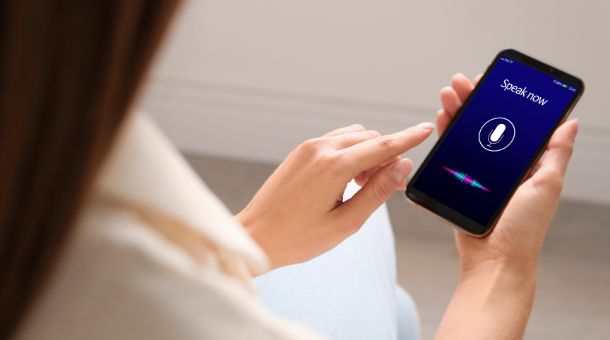In this Article, we will discuss How to Optimize Your Content for voice search? With voice assistants like Alexa and Siri getting widespread acceptance, the traditional SEO of websites is evolving to incorporate voice search.
In many instances, customers searching for products, services, and Content that will inform their purchasing choices are using spoken search commands instead of typing their search phrases into the browser.
Therefore, in addition to using strategically chosen words and phrases that various search engines can crawl, index, and rank, businesses now have to ensure that their Website pages are also ranked highly in the results of voice searches.
This presents a new problem since online Content should be more precise for it to be found by voice search. Below, 13 members from the Forbes Communications Council provided other Key factors that marketers must consider when optimizing their Content for voice search.
What is voice Research?

Voice of Research- A Peer-Reviewed Internationally Reviewed Journal for Change and Development (ISSN 2277-7733) is an annual journal published in English from Ahmedabad, Gujarat, with an Impact factor of 3.522 according to I2OR.
Advancements in voice technology, AI, machine learning, and computer-based methods have allowed us to use established behavioral science and accurately detect people’s moods in their voices based on their tone, pitch, and other characteristics.
How to Optimize Your Content for voice search?
Focus On Local Search Results
Make sure you are optimizing for local results. Many voices and mobile search queries are based on location, such as locations, hours of operation, or hours of operation.
Don’t overlook results from local searches that you can improve with something as easy as creating and updating the details of your Google My Business listing. In turn, you can make more relevant Content that addresses local-specific questions.
Choose Long-Tail Keywords
Focus on long-tail keyword phrases to make your Website more optimized for a voice search-friendly site. The most commonly used terms to talk about should be considered in the creation of Content you want people to search for understanding.
Then, you must think about local SEO. Develop Content that is specific to the location that you’re aiming for. In this way, you’ll have a better chance of being on the top of search results generated by voice. pages
Use Conversational Language
When people search using voice-based assistants, they use conversational languages, which typically contain longer, more specific search terms. Thus, optimizing voice search requires marketers to concentrate on keywords with a long tail.
Properly Structure Your FAQ Page
Voice search is growing. This kind of searcher uses different words, which means it is important to prepare your Content accordingly. For a start, you should create FAQs that read as informal conversation rather than formal documents.
Make sure they are properly formatted on your Website, and you’re more likely to receive prominent snippets from Google. Not sure where to start with your Content? Check out your online reviews for an idea and voice.
Answer ‘Who,’ ‘What,’ ‘Where,’ And ‘How’ Questions
Most people use different words and more complex queries to conduct a voice search. The majority of voice searches begin at “who,” “what,” “where,” or “how.”
Develop detailed answers to the most frequently requested questions about your business. Make sure your Content responds to the who, where, what, and how of your services and products, and include some entertainment when appropriate.
Where Does Your Audience Use Voice Assistants?
Be ready to speak with your voice-first customer who is on the move. This will help you be part of the consideration list with “Near Me” searches and check the information of retailers as:
- 29percent of people utilize voice assistants on their phones outside of their homes and
- 18.9% of the respondents utilize voice assistants at the retail store.
Don’t limit your thoughts to smartphones or smart speakers in the realm of voice because 26% of users use headphones or intelligent earphones. Furthermore, they utilize kiosks and other off-the-grid devices that can be accessed via voice.
In addition, people utilize voice-activated tablets, smart watches, computers, tablets, televisions, kiosks at stores, and much more. Be aware that there’s no implication for marketing in a voice-activated consumer’s statement, “Hey, Google, turn on the lights.” (At most, once you’ve purchased the gadgets.)
For instance, in New York, phone booths are now replaced with these out-of-home spots for advertising. They are equipped with telephony and permit users to charge their phones.
It’s important to remember this: in the “Where US Consumers Use Voice Assistants” chart above, the colors represent distinct responses from other charts from the VCI research.
As a marketer, consider the use of consistent symbols and legends within the Content you create. If you do not, your audience may confuse about the information.
In addition, this issue was not as clear as it could be. Although around 30% of the population uses voice assistants in their cars, however, it’s not known if they are using their smartphones or an automotive manufacturer-installed device. Other people could be able to hear voice commands and other information in addition to the driver.
For instance, Mercedes Benz uses Houndify to develop their private voice communication and controls that secure their audience’s data.
Voice Assistant Statistics: Why Do Your Audience Use Voice Assistants?

The majority of users make use of voice assistants for natural audio-related features! The highest usage scenarios are for checking the weather (56 percent) to listen to music (55 percent), and also to make a phone call (44 percent).
Why US Consumers Use Voice Assistants Chart via VCI
Around a third of US, users use voice assistants to control and integrate them with other technologies. Specifically, they utilize voice assistants for:
- Automate time-saving tasks (35 percent):
- Control and integrate household technology (29 percent):
- Find their number (28 percent) and
- You can control their TV (26 percent).
One in ten made use of their voice assistant to purchase something, usually to purchase tickets. Based on the experience I’ve had using our voice-enabled TV via the Amazon Alexa Firestick, these tickets are generally for sports and entertainment occasions, as well as subscriptions that are promoted cross-promotionally. (Note: the regularly”‘ and “sometimes” categories were mixed. The classes were combined.
Actionable Voice Marketing Tips:
- Allow connected devices and voice to use your voice assistants, thereby increasing the efficiency of the customers you serve. Include smartphone use. Be sure to be ready to assist other brands’ products.
- Promote and provide your on-boarding Content to help new owners to connect their devices to phones and voice assistants. Where possible, create your guides and tutorials simple to use and include videos. Additionally, have the details on product pages, purchasing receipts, and FAQ pages.
How Does Your Target Customer Shop With Voice?
While VCI Research explicitly says “Making Purchases” however, the purchase portion of voice commerce could encompass several different actions beyond the payment of your goods and services. These include:
- Place items in the shopping basket. For example, many people use their smart assistants to make an order list by adding items to their cart whenever needed. For instance, after you’ve eaten the cereal box and can add the item to your grocery list using the voice assistant. If you’re using Amazon Alexa and shop at Whole Foods, you can look over the list and place an order. Print the list and bring it to a local grocery store.
- Confirm purchase orders by saving purchase information or creating new details.
- Purchase online or in-app products like video subscriptions or an Amazon Firestick with Alexa (aka the smart TV devices.)
- Follow your order throughout the Company’s operations and delivery to your residence. Amazon’s integration with the backend gives them the greatest control over every aspect throughout the process.
What Type of Concerns Voice Consumers Have
Voice-based technology offers marketers who are mindful of their customers’ data security and privacy to be noticed. Around 4 out of 5 people get valuable information from their smart assistants and can use it.
What are the best ways to use voice research?
Voice search technology has transformed how we use our devices and locate information. Our research found that most people used voice search at least every week, but the frequency has decreased as the technology has changed.
In 2020, the Company predicted that 50% of all searches would be voice search results.
Ways To Optimize Your Website For Voice Search In 2022
Vocal search is a new technology that lets you find things online with voice commands. While it’s been in use for over a decade, its application is only becoming popular recently.
Positioning your business on the fast-approaching voice-first world
The adoption of smartphones has exploded and led to major changes in how we search. We are rapidly moving into the world of voice-first when it comes to search results.
In addition, as companies adopt e-commerce platforms in a flurry, you are left with no choice other than to be safe by optimizing your site, Content, and all other aspects to keep up with evolving times. Also, look at ways you can optimize your site for voice and image searches.
The race to get a limited number of customers. It’s not a good idea to miss out on a piece being offered.
How can you maximize wearable technology and voice search to increase your competitive advantage over your competition?
Create the best strategy for course of
As voice search usage grows, you will need to adapt your business strategy to meet the current and future requirements for voice search.
This means that you must create a plan. You must evaluate all the keywords you require, your existing Content, and your future needs. You then need to create new Content.
Be listed on the internet
This is great If you’re a local Company. However, it is possible to ignore this requirement if you’re not. If you’re a local, One of the best ways to prepare yourself for voice search is to ensure that you’ve identified on the internet.
If you’re selling wearable tech products, you’re aware that they are limited in size displays. Additionally, smartphones have voice assistants, for example, Google Assistant for Android and Siri for Apple devices.
Unlike Google results in text, however, Google’s assistants don’t display results from searches specifically for local companies. Instead, they display the business’s listings first. So, you’re not optimizing your site.
Find your keyword
Be aware that your clients will use voice search, not using keywords. This means that you’ll have to handle an increase in keyword length due to the nature of human communication.
Instead of focusing on keywords like “pineapple birthday cake,” it is better to concentrate on something else like “do you know of any reliable vendors for pineapple birthday cakes?” Voice does not provide you with outcomes or alternatives but guides users to a specific product’s action.
If you’re confused, you should invest in quality SEO software that will aid in narrowing down to the specific keywords that are effective for your site.
How to Optimize Your Website for Voice Search SEO:
- Reduce loading time
- Use long-tail SEO
- Target your audience’s questions.
- Creates voice-search-friendly Content
- Create additional localized Content
- The user experience is everything
FAQ on How to Optimize Your Content for voice search?:
Where do people use voice assistants?
Smart speakers and smartphones are the gadgets of choice for most voice assistant users. However, the use of voice assistants is also increasing in vehicles and on smart TVs. Smart home components appliances, wearables, and other gadgets that are connected.
Who is the person who invented the concept of voice analysis?
Lawrence Krista
The U.S. Federal Bureau of Investigation (FBI) employed spectrographic analysis or voice identification in the 1950s; however, the method did not receive scientific recognition until a study in 1962.
written by the late Lawrence Kersta, who was a researcher on a model of the 1940s Bell Laboratory sound spectrogram
How many people utilize AI assistants?
In 2020 in 2020, there will be 4.2 billion digital voice assistants employed in all sorts of devices around the globe. Digital voice assistants that are in use between 2019 and 2024 (in billions)
Do people make use of voice search?
Recent statistics indicate that 41 percent of adults use to search for a voice at the least one time per every Day. By 2020 over half of the smartphone users will be using the voice search feature on their devices—external Link.
How does voice search impact marketing?
Voice search is a crucial marketing trend in that customers wantgreater convenience in their search. Vocal search has the potential to revolutionize marketing online. If your business isn’t optimized for voice search, you will not be able to connect with your customers and reach its growth goals.

